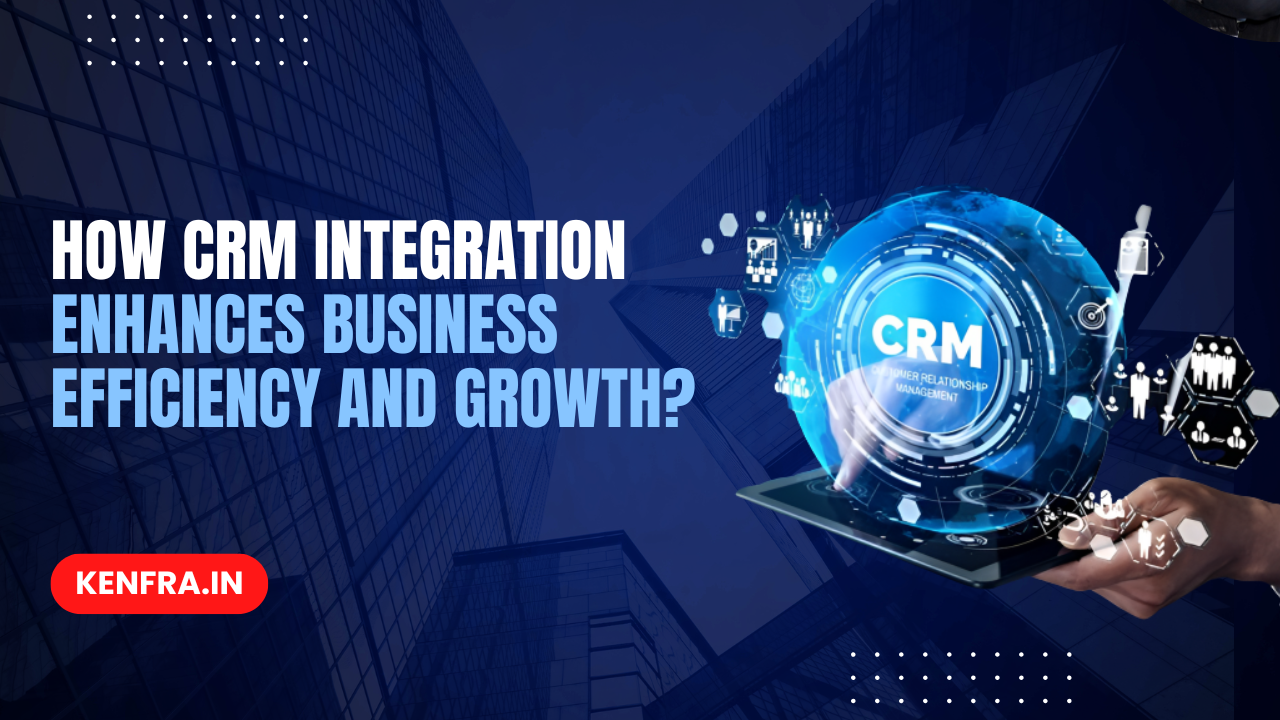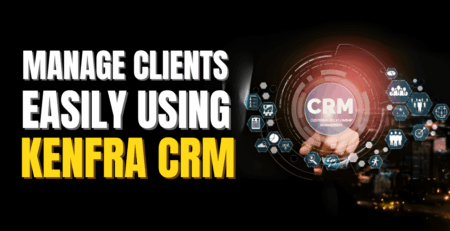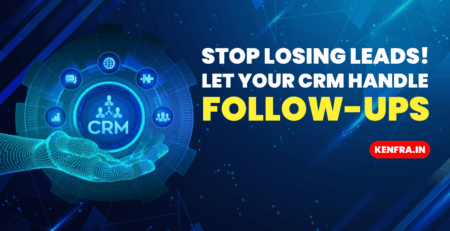How CRM Integration Enhances Business Efficiency and Growth?
Kenfra Research - Bavithra2025-10-28T17:40:27+05:30Did you know that companies with disconnected systems waste about 30% of their work time on fixing data issues? This mess leads to lost sales and frustrated teams. CRM integration fixes this by linking your customer relationship management tool to other apps like email systems or inventory software. It creates one clear view of your customers. In short, this setup boosts how you run things and helps your business grow faster.
Defining CRM Integration and Its Foundational Role in Operations
What Exactly is CRM Integration?
CRM integration means connecting your CRM platform to other tools your business uses. Think of it as building bridges between apps for sales, marketing, and support. For example, you might link it to an ERP system that tracks inventory or a marketing tool that sends emails.
Basic sync just copies data now and then, like a quick update. True integration goes deeper. It lets data flow in real time, so changes show up right away across all tools. This keeps everyone on the same page without extra work.
Types of CRM Integrations That Accelerate Growth
Every business operates differently, but most benefit from integrating their CRM with three core systems:
- Marketing Automation
Connect your CRM to email and advertising tools to track engagement, score leads, and personalize campaigns. Marketing gains insight into what converts, and sales knows which prospects are ready to buy. - Sales and ERP Systems
Syncing your CRM with an ERP or accounting system gives sales teams real-time visibility into inventory, pricing, and order history — ensuring promises made to customers match what’s in stock. - Customer Support Platforms
Integration between CRM and helpdesk tools ensures agents see the full context of each customer’s journey. No more repeating details or missing crucial background information.
These integrations allow small teams to deliver enterprise-level coordination and service.
How CRM Integration Boosts Operational Efficiency?
Streamlining the Sales Cycle with Unified Data Access
Sales teams struggle without full info on leads. Integration gives instant access to marketing notes and past buys right in the CRM. You spot hot leads faster and close deals quicker.
For instance, a rep pulls up a customer’s full history in seconds. No digging through emails or spreadsheets. This cuts the sales cycle by up to 20%, based on reports from tech firms.
Actionable Tip: Set one main spot for all customer contacts. Update it in the CRM first, then let it sync out. This keeps data fresh and teams aligned.
Automating Repetitive Tasks Across Departments
Manual tasks eat up time, like logging support calls or chasing payments. Integration automates these steps. When a sale closes, it auto-creates a follow-up task in support.
Or, if an invoice sits unpaid, the system triggers an email reminder. No one forgets. Teams focus on big goals instead of busywork.
Here’s how it works in practice:
- Marketing sends a nurture campaign when a lead views your site.
- Finance gets alerts for overdue bills from CRM triggers.
- HR pulls employee notes into onboarding flows.
This setup saves hours weekly and lets staff handle more customers.
Improving Data Accuracy and Reducing Manual Errors
People make mistakes when typing data by hand. A wrong email address loses a lead. Manual transfers between systems add to this risk.
Integration cuts errors by pulling data straight from the source. Changes update everywhere at once. Studies show this boosts accuracy by 40% in busy offices.
You avoid duplicate records too. One customer file means no confusion over who owns the deal. Productivity jumps as teams trust the info they see.
How Integration Drives Customer-Centric Growth?
Creating a True 360-Degree View of the Customer Journey
Customers touch many parts of your business: ads, sales calls, support chats. Without integration, you miss the full picture. Linking CRM to these sources builds a complete view.
You see marketing clicks, buy history, and complaint notes in one spot. This lets you tailor offers just for them. Personal touches like “We noticed you liked this product” build trust.
Hyper-personalization from this data opens doors for upsells. A customer who bought shoes might get socks suggestions based on past views. Revenue grows as loyalty rises.
Accelerating Lead Nurturing and Conversion Rates
Marketing tools and CRM together speed up lead care. Automated scoring ranks leads by actions, like email opens or site visits. High scores go straight to sales.
Real-time data means sales acts on fresh engagement. No cold leads sitting around. One company saw conversions rise 25% after this setup.
It works like this:
- Lead clicks an ad; CRM notes it.
- System scores and routes to the right rep.
- Follow-up happens within hours, not days.
This shortens paths from interest to sale.
Optimizing Post-Sale Service and Retention
After a purchase, support keeps customers happy. Integrated CRM with ticketing shows full context. Agents resolve issues fast, often on first contact.
Faster fixes mean higher satisfaction scores. Customers stay longer and refer friends. Retention rates can climb 15% with this approach.
For example, if a buyer reports a faulty item, the agent sees the order details and past support. They ship a replacement quick. No back-and-forth emails. This turns one-time buyers into repeats.

Strategic Advantages: Smarter Decision-Making and Scalability
Leveraging Integrated Data for Business Intelligence (BI)
Scattered data makes reports hard. Integration feeds all info into BI tools or the CRM dashboard. You track marketing costs against sales wins easily.
Cross-team views show real patterns. Like how support calls link to product flaws. Leaders make choices based on facts, not guesses.
Reports become simple:
- Weekly dashboards on lead flow.
- Monthly breakdowns of revenue sources.
- Yearly trends in customer churn.
This intel guides budgets and hires for better results.
Future-Proofing Infrastructure for Business Scaling
Growth brings new tools and teams. Integrated systems adapt without big overhauls. Data flows stay steady as you add locations or apps.
Standard processes mean less training for new staff. Expansion feels smooth, not bumpy. Businesses that integrate early scale twice as fast, per industry stats.
You plug in a new payment gateway, and it syncs with CRM orders. No custom fixes needed. This keeps costs down as you grow.
Expert Insight: The Role of APIs in Sustainable Integration
APIs act as steady connectors between systems. They handle data exchange without breaking when updates happen. Custom scripts often fail over time.
Industry watchers note that mature APIs cut maintenance by half. Choose platforms with strong API support for long-term wins. This builds a base that lasts.
Avoid brittle links; go for ones that update automatically. Your setup stays reliable as tech changes.
Conclusion: The Integrated Future of Business Success
CRM integration brings clear wins: smoother operations, better customer ties, and smart growth from data. It ends data silos and sparks efficiency across teams. Sales close faster, services impress, and decisions hit the mark.
This isn’t just tech—it’s a way to stay ahead. Businesses that link their CRM thrive in tough markets. Kenfra CRM makes this integration seamless, helping companies connect data, automate workflows, and deliver exceptional customer experiences. Start by checking your current tools for sync options. Build that unified system today with Kenfra CRM, and watch your efficiency and growth take off.






Leave a Reply